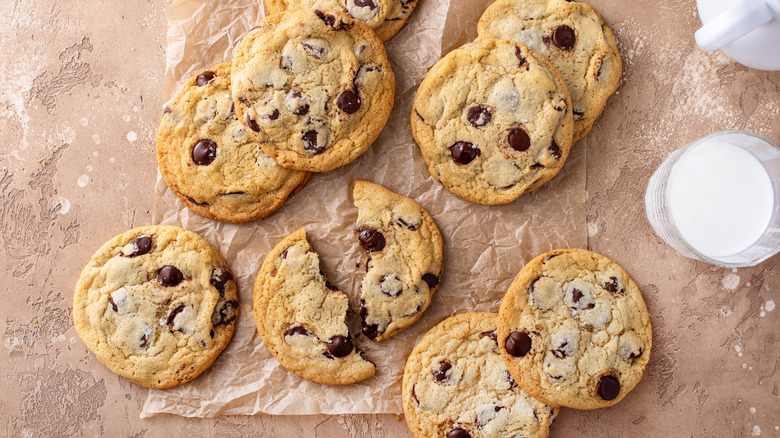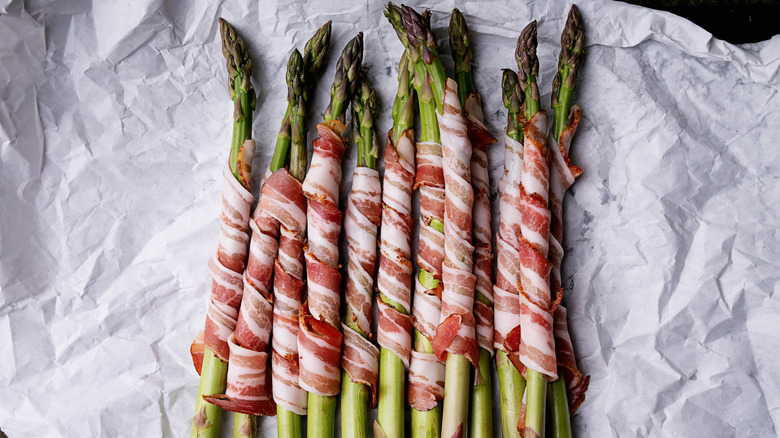Is There A Difference Between White And Brown Parchment Paper?
If any product could be said to ease the workload for both professional and home bakers, it would have to be parchment paper. It guarantees an easy release for baked goods like cookies, cakes, and other pastries, and it can be easily cut to fit any pan, regardless of shape. Additionally, parchment paper is excellent for keeping everything you bake neat and tidy, from the slips placed under an uniced cake to keep frosting off an elegant stand to those meant to catch hot grease in a sheet pan of oven-baked bacon and ease cleanup. Parchment paper can also be a game-changer when cooking chicken.
There are two basic types of parchment paper available: bleached and unbleached. But what's the difference? Visually, unbleached parchment paper is brown, while bleached parchment paper is white. Perhaps you're using the parchment paper to wrap gifts of bakery-style peanut butter cookies. It's up to you if you want it snowy white to contrast with the colored ribbons or unbleached to give it a rustic look when tied with twine. Other than appearance, there are a few other minor differences to keep in mind between the two types of parchment paper.
What is parchment paper?
Parchment paper is produced from the plant fibers of cotton or flax as well as from fir trees. The baking paper is then coated with silicone or another chemical called Quilon to make it resistant to heat, grease-proof, and most importantly, nonstick. Bleached parchment paper is additionally treated with chlorine to achieve that bright white color. When it comes to baking with bleached or unbleached parchment paper, there is virtually no difference in browning or the rise of your foods. The outcome will be identical.
Lately, there have been health concerns raised around the use of bleached and coated parchment paper. There have been questions about the chromium in Quilon-lined parchment paper and whether it might be toxic at very high temperatures. In the same vein, many people avoid bleached parchment paper since industrial bleaching of paper pulp releases a substance called dioxin, which can cause adverse health effects. Many opt for Quilon-lined paper because it's cheaper, and bleached parchment paper also tends to be slightly less expensive. But all of these food-grade parchment papers have been deemed safe to use in home cooking. Ultimately, the choice is yours.

